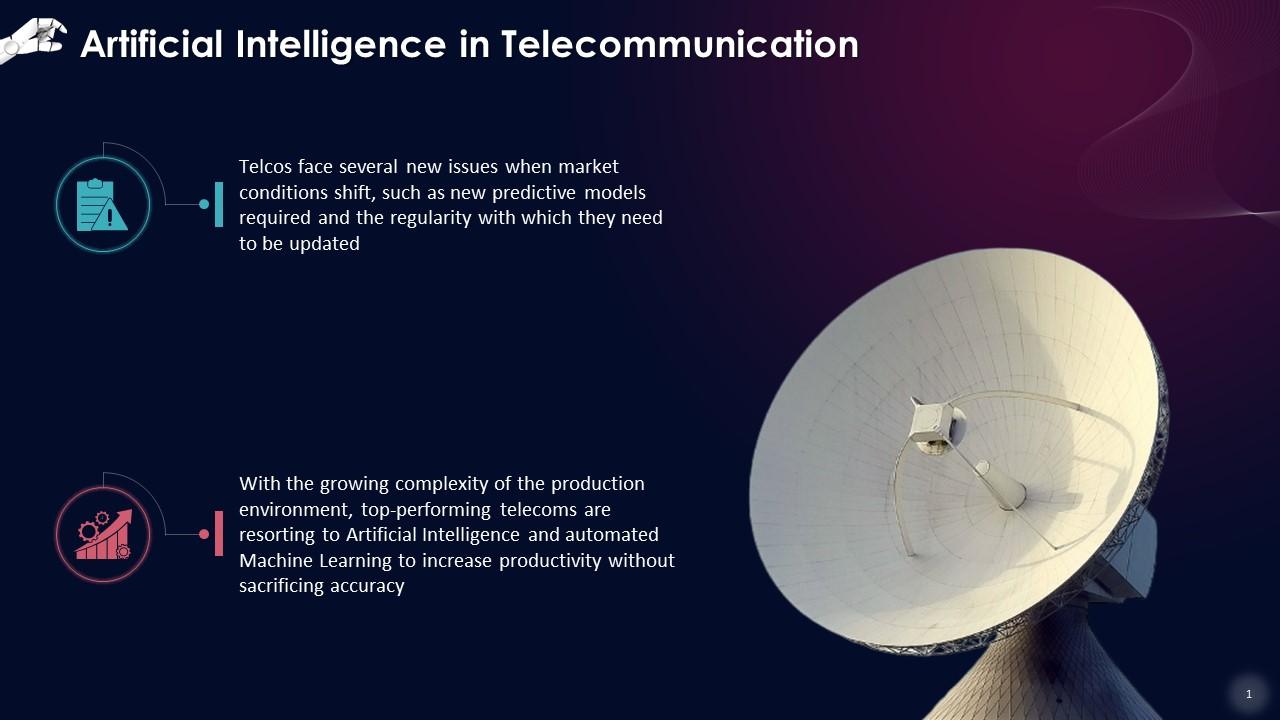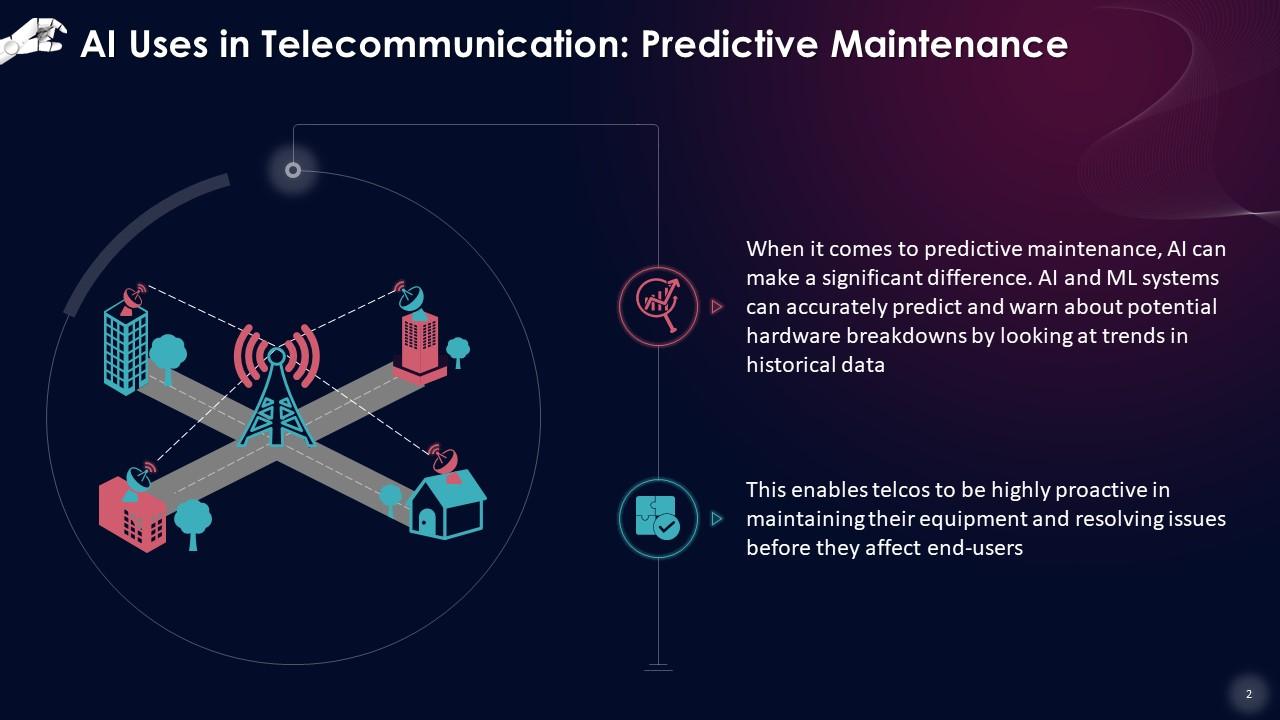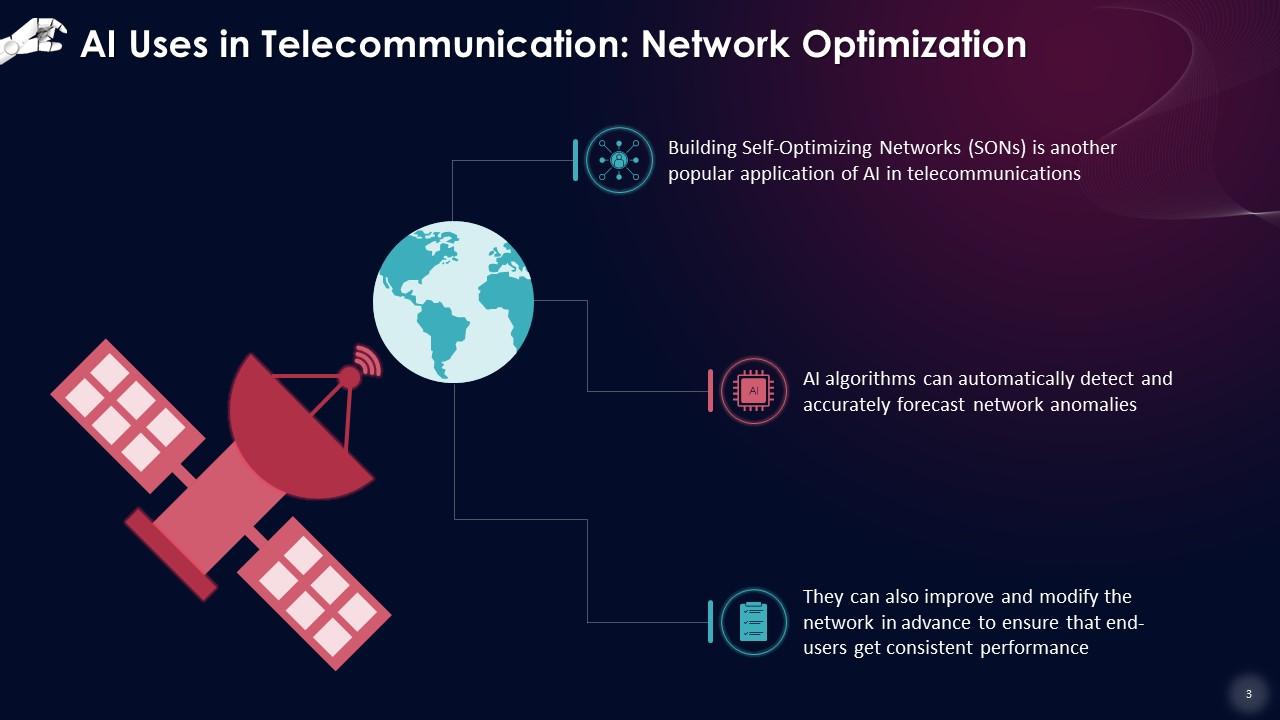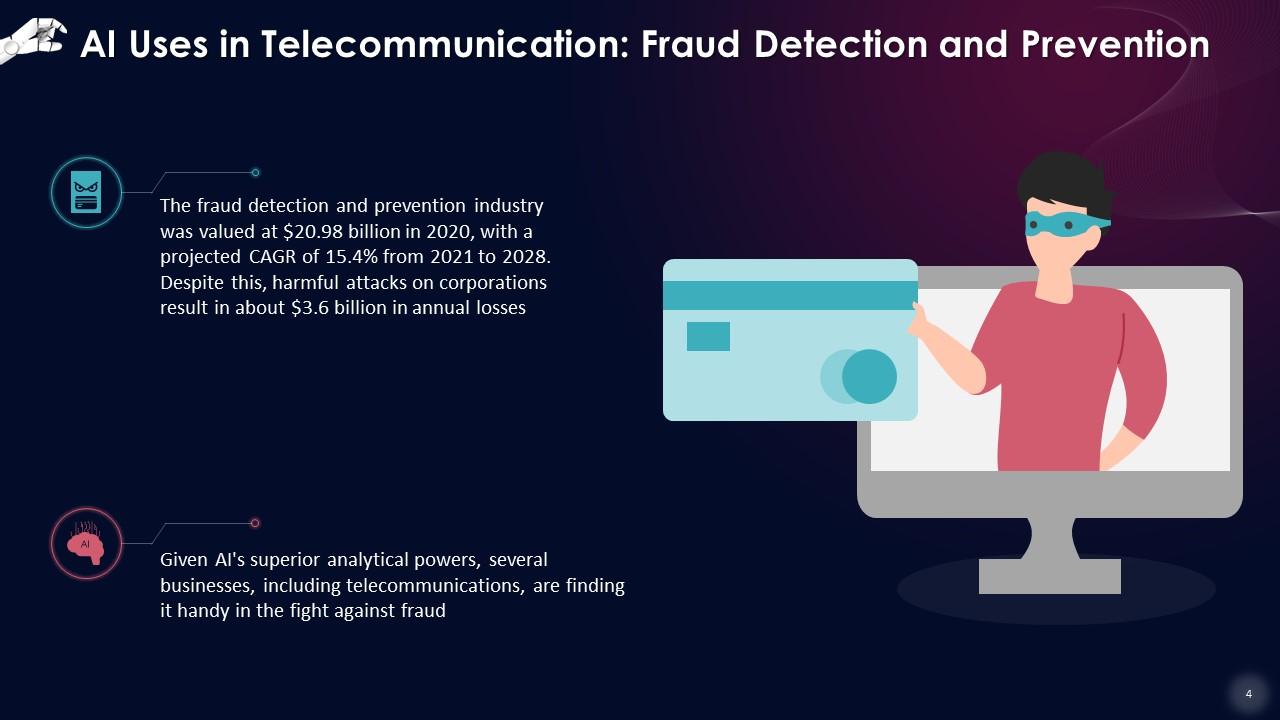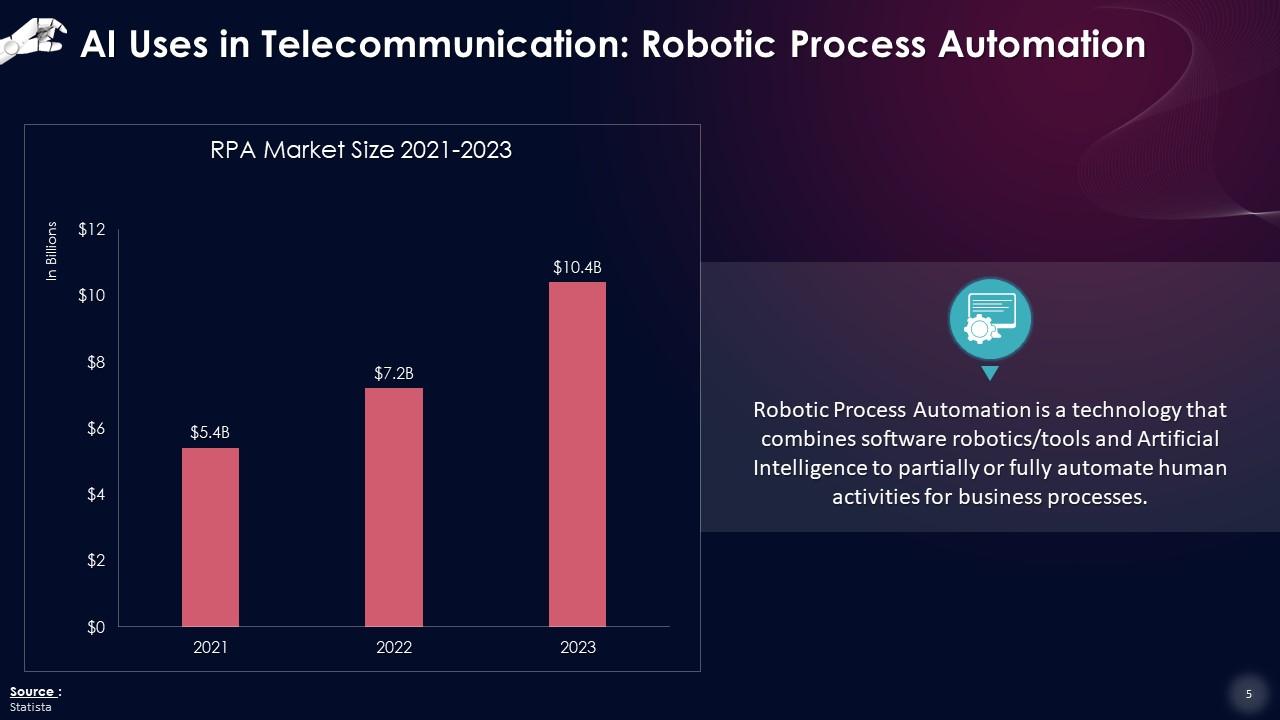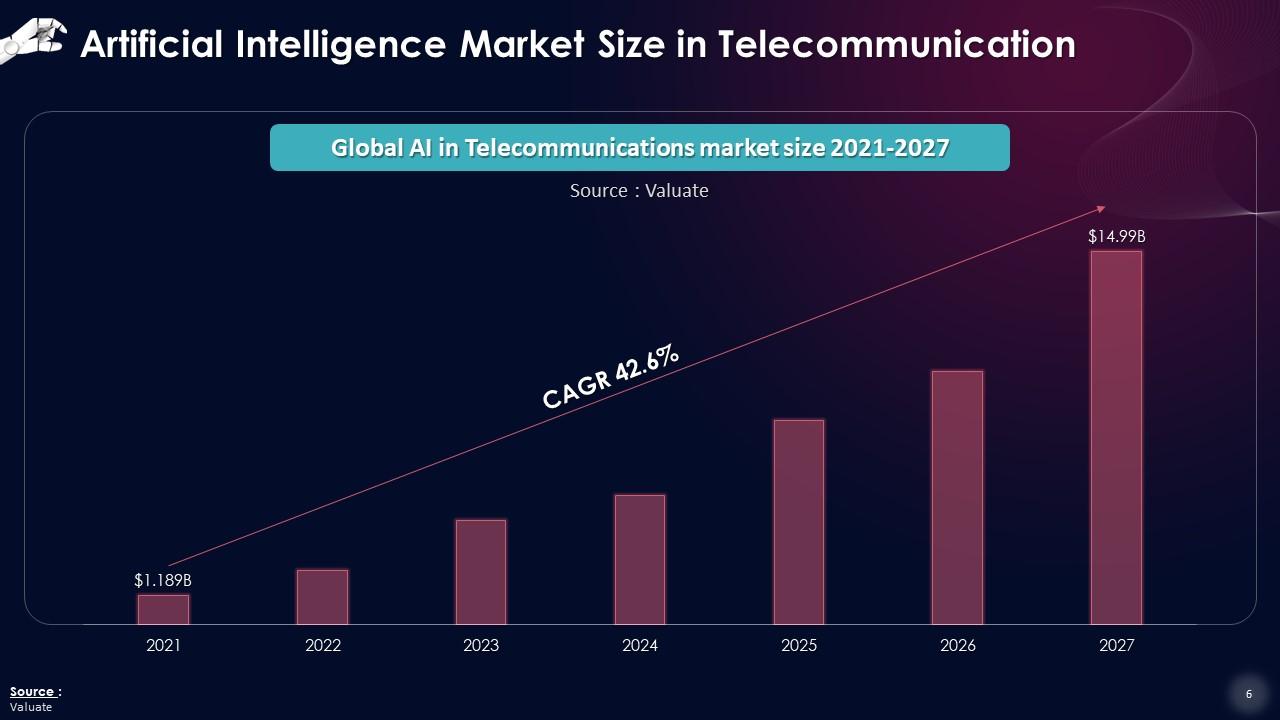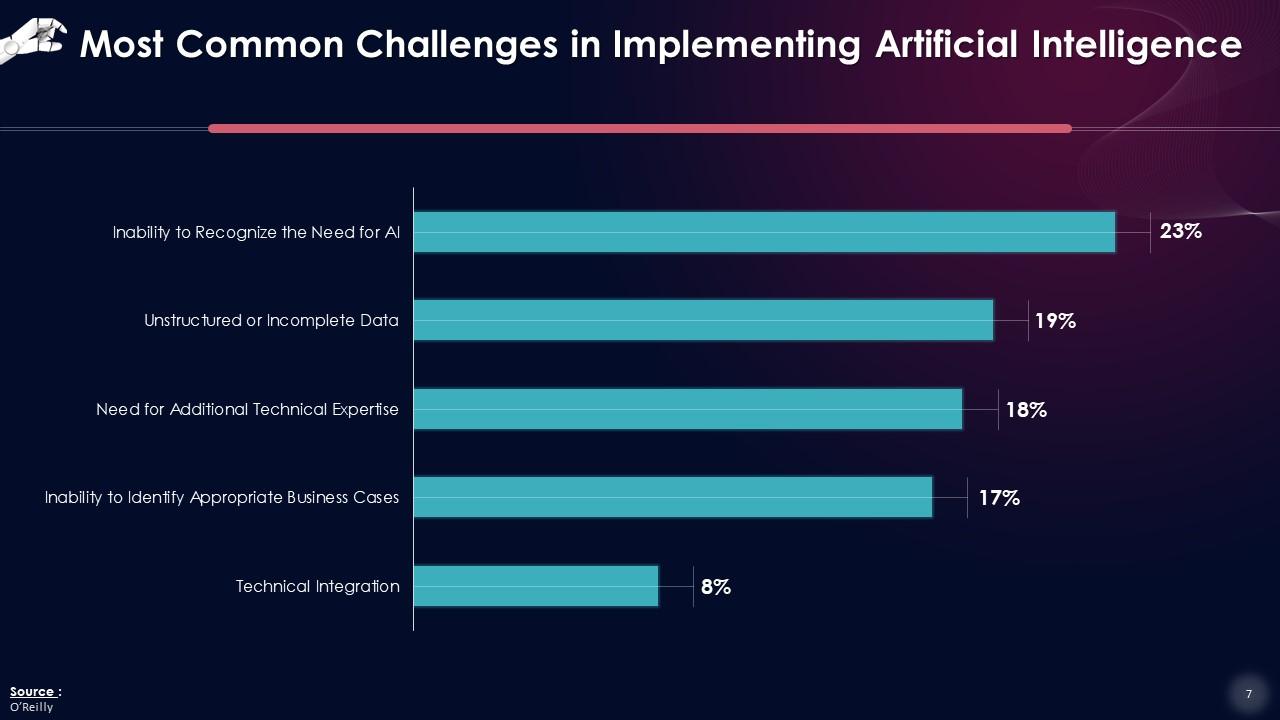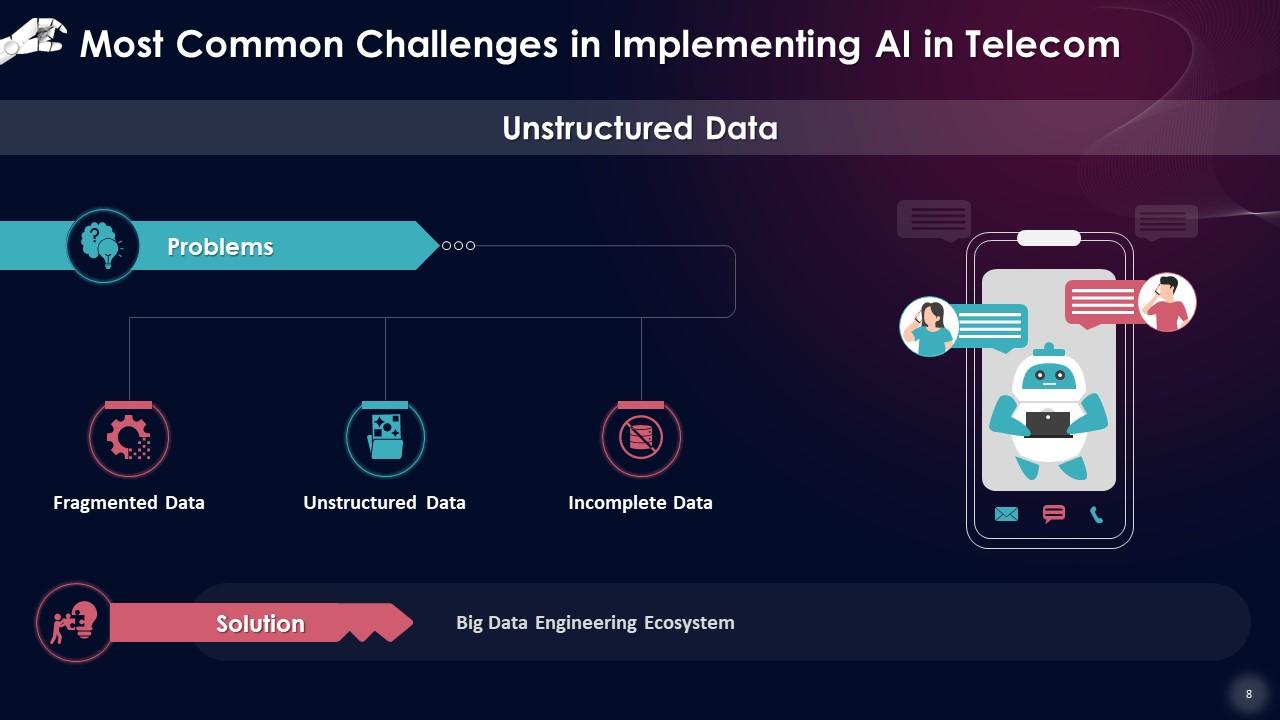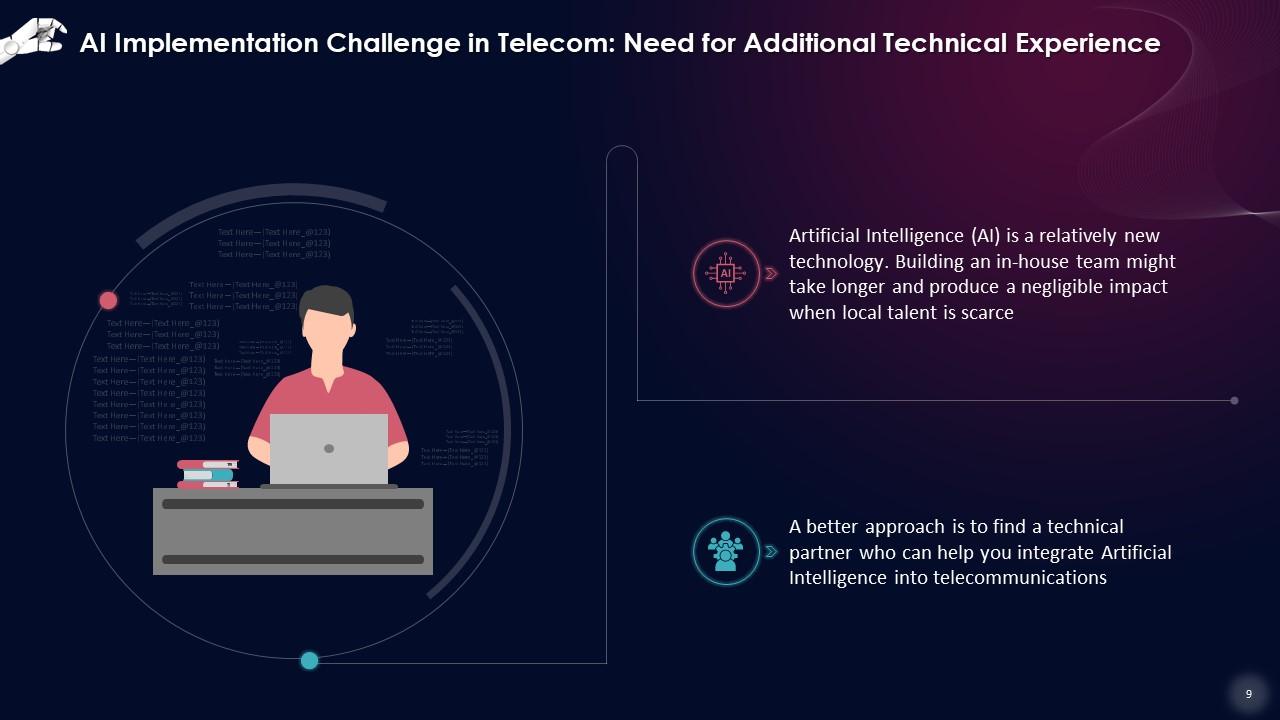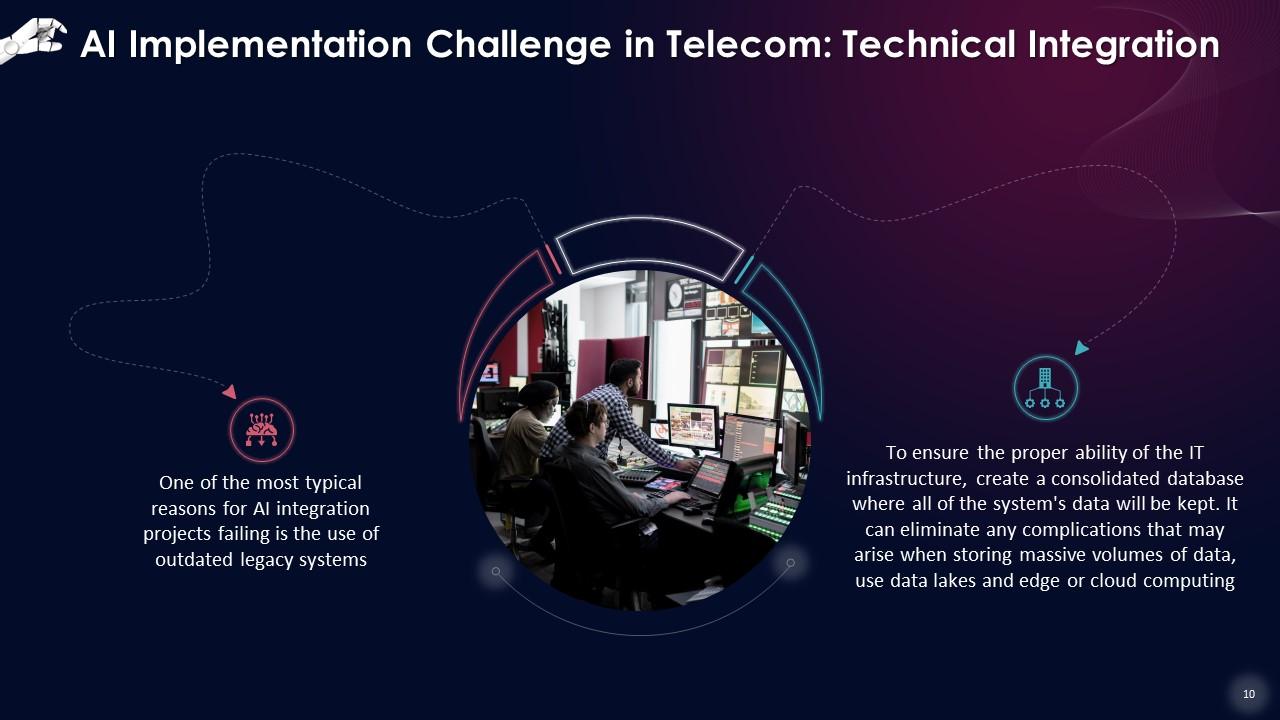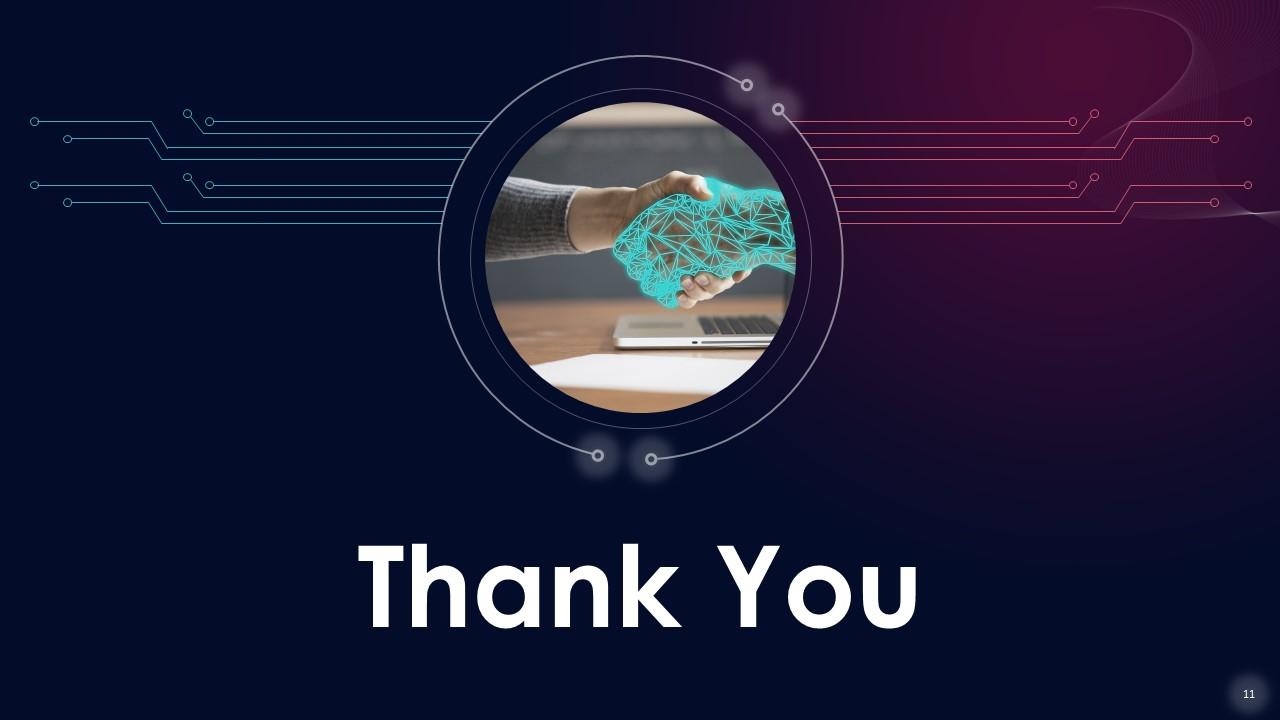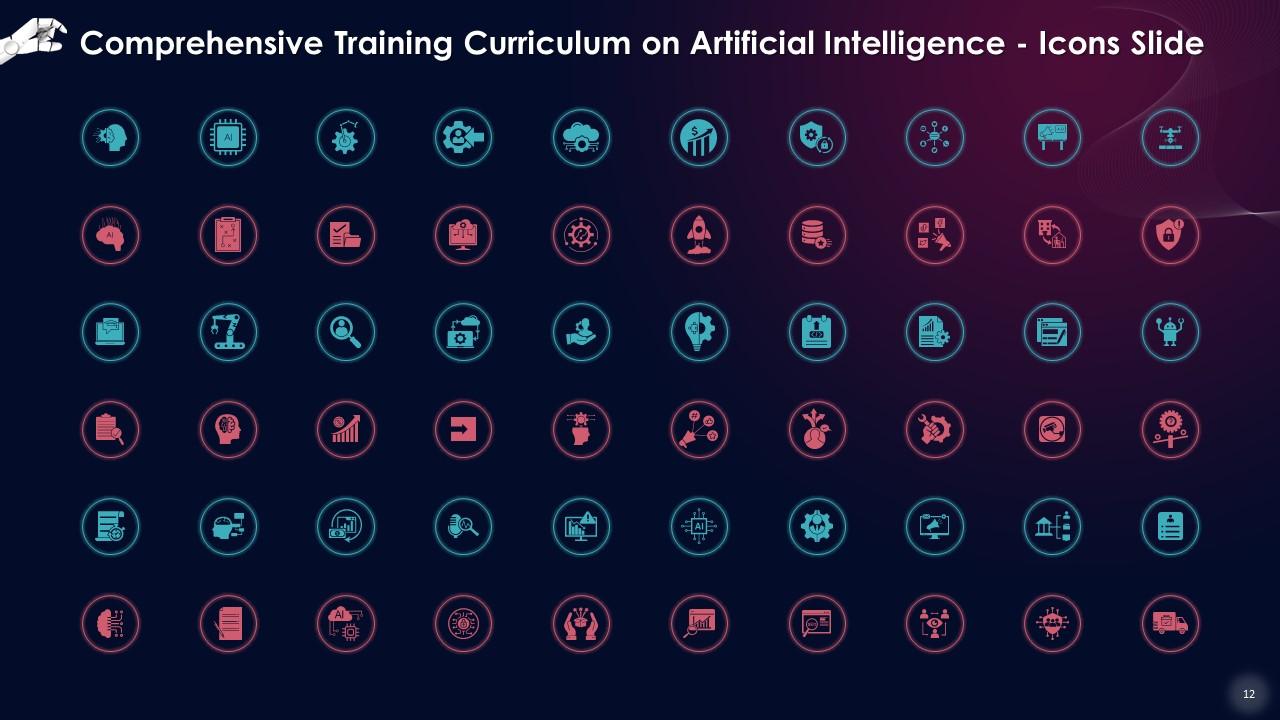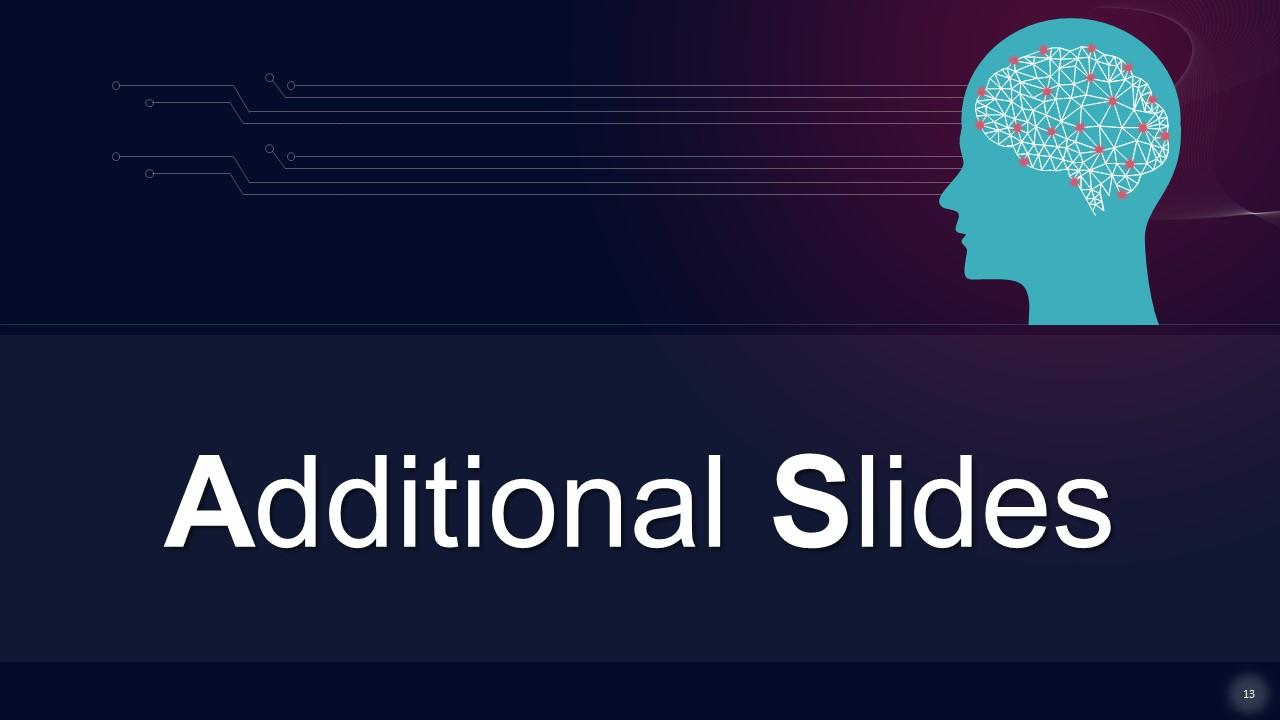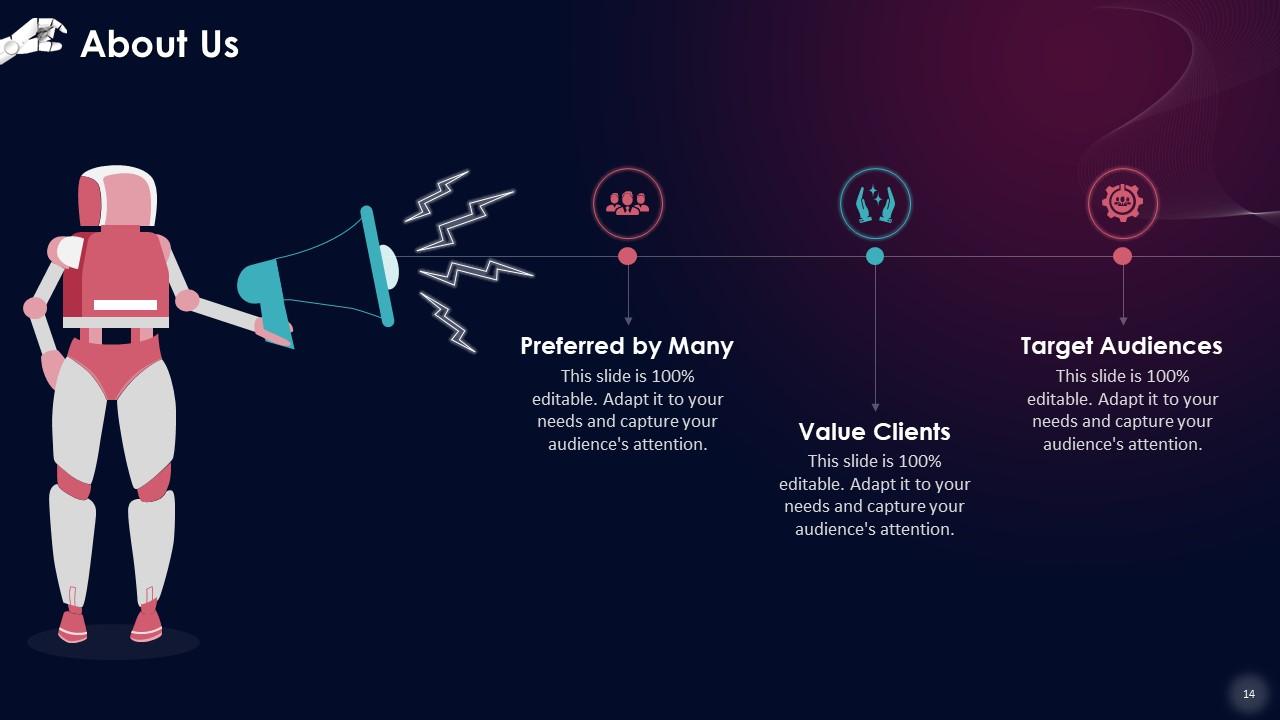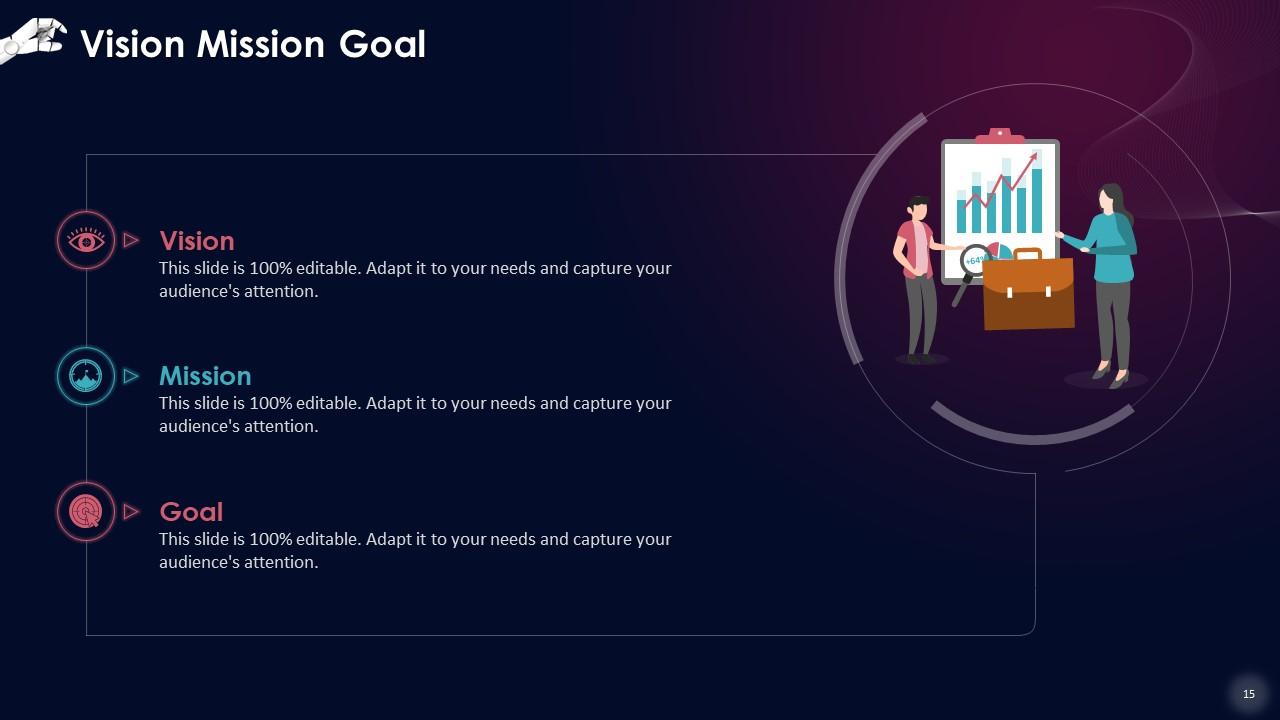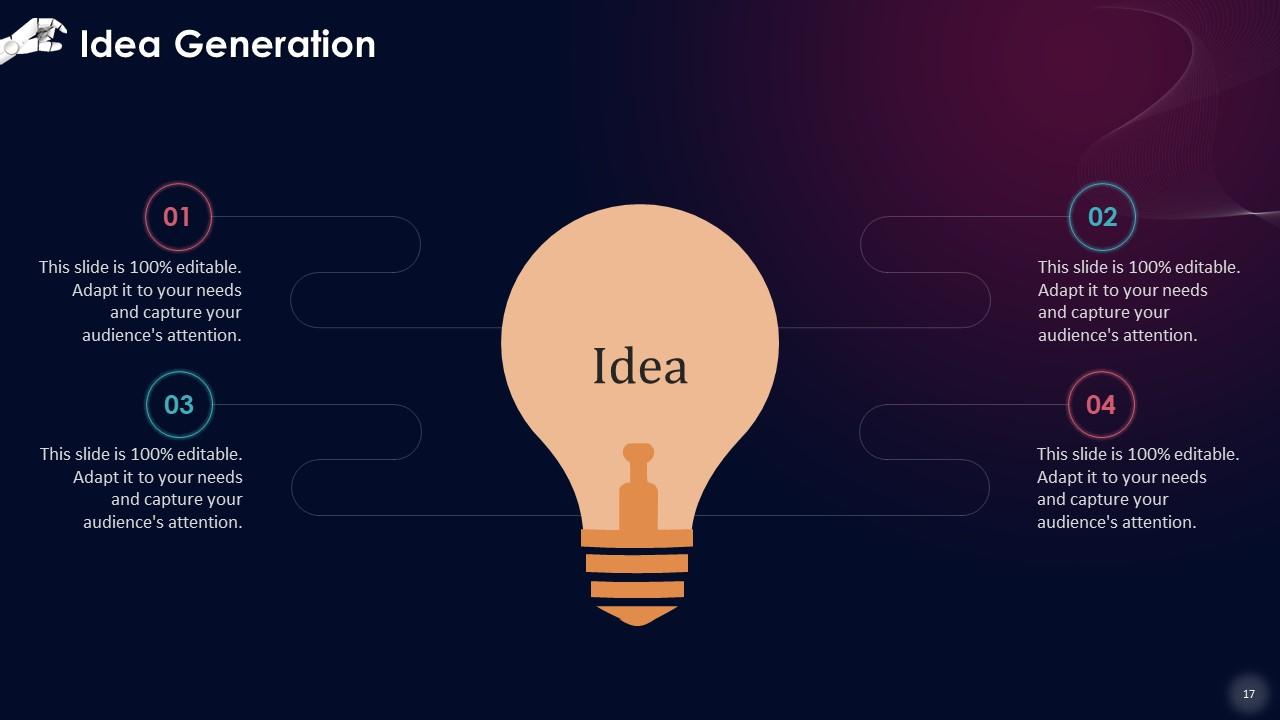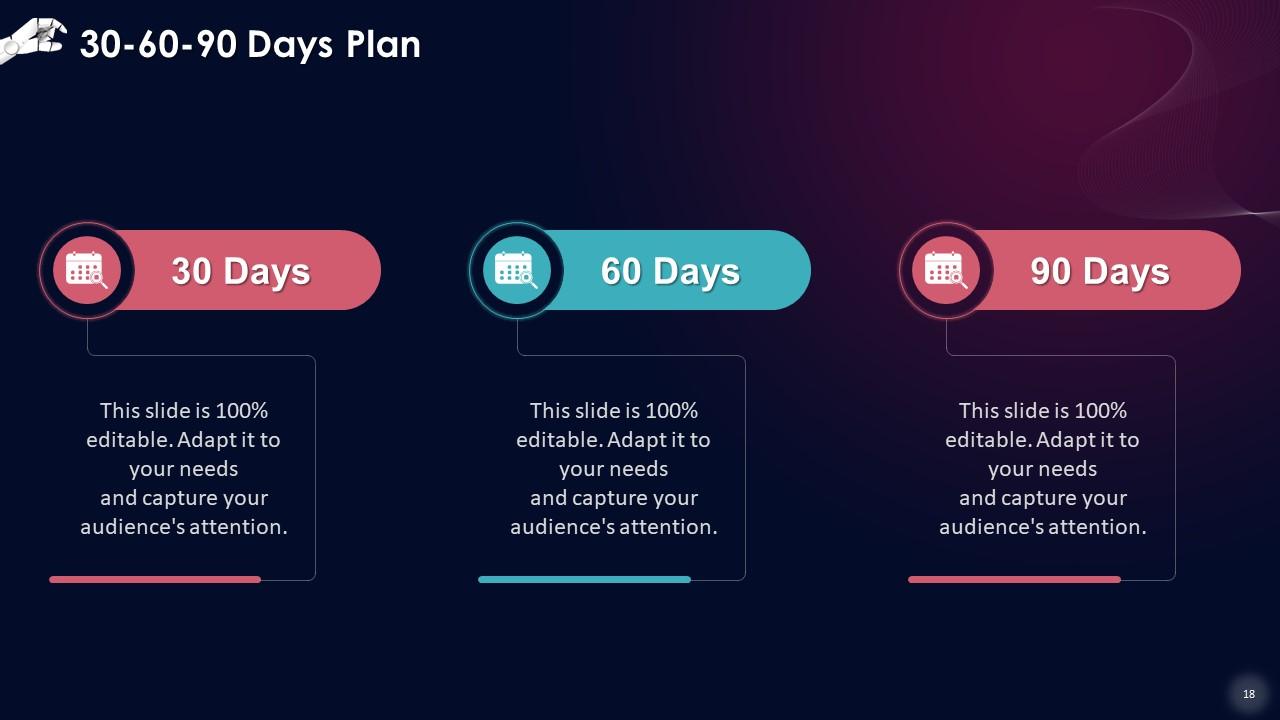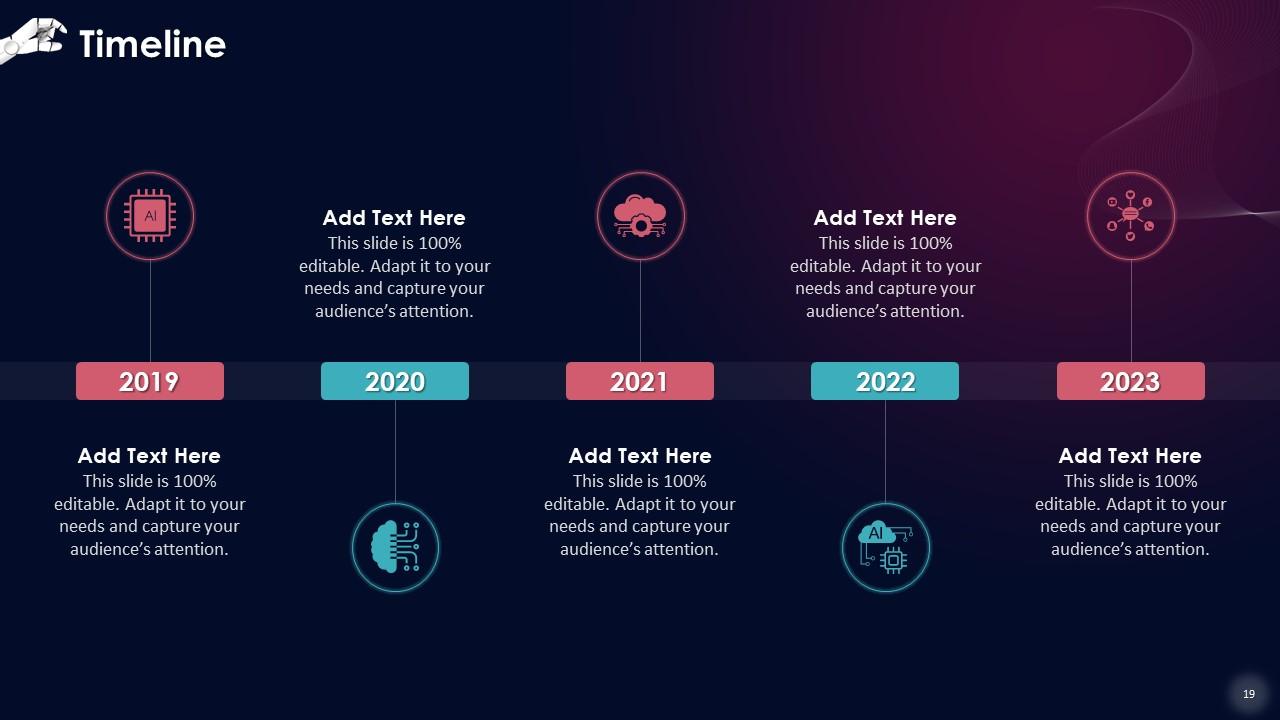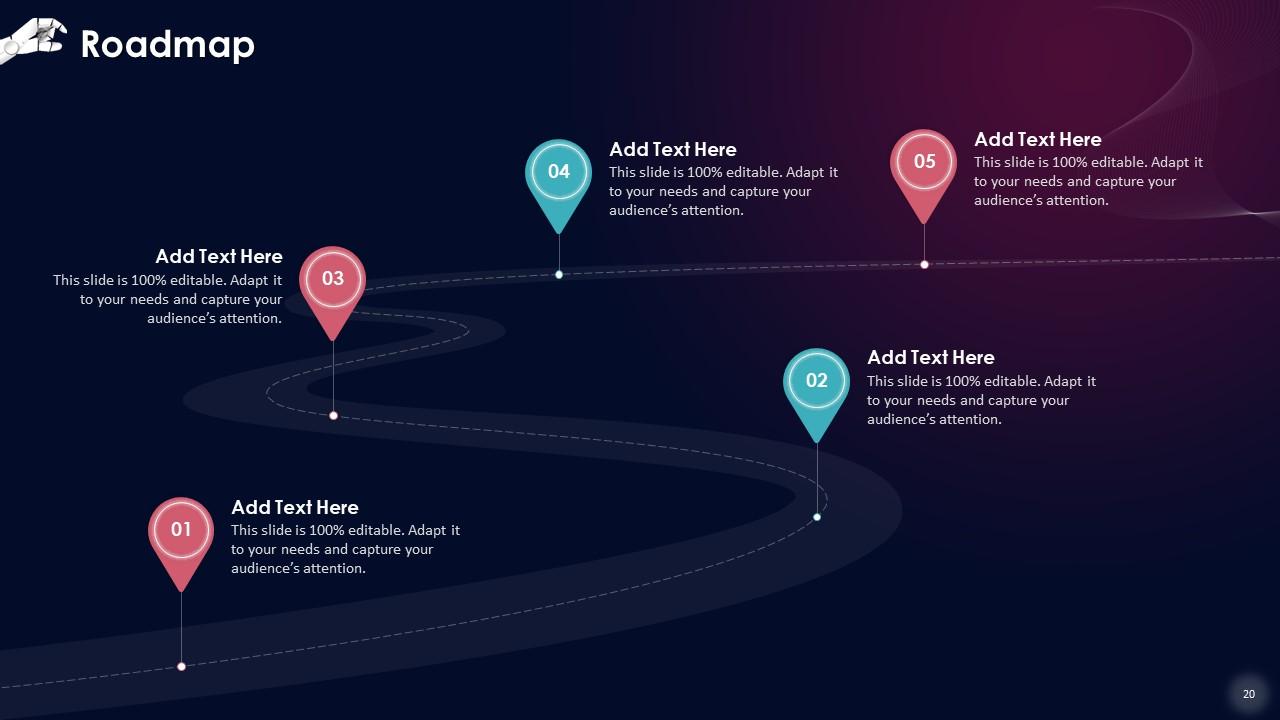AI Revolution In Telecommunication Training Ppt
This set of slides discusses the importance of AI in telecommunication. Telcos face several new issues when market conditions shift, such as new predictive models required and the regularity with which they need to be updated. Hence, adopting AI technologies becomes essential as they increase productivity without sacrificing accuracy.
This set of slides discusses the importance of AI in telecommunication. Telcos face several new issues when market conditio..
- Google Slides is a new FREE Presentation software from Google.
- All our content is 100% compatible with Google Slides.
- Just download our designs, and upload them to Google Slides and they will work automatically.
- Amaze your audience with SlideTeam and Google Slides.
-
Want Changes to This PPT Slide? Check out our Presentation Design Services
- WideScreen Aspect ratio is becoming a very popular format. When you download this product, the downloaded ZIP will contain this product in both standard and widescreen format.
-

- Some older products that we have may only be in standard format, but they can easily be converted to widescreen.
- To do this, please open the SlideTeam product in Powerpoint, and go to
- Design ( On the top bar) -> Page Setup -> and select "On-screen Show (16:9)” in the drop down for "Slides Sized for".
- The slide or theme will change to widescreen, and all graphics will adjust automatically. You can similarly convert our content to any other desired screen aspect ratio.
Compatible With Google Slides

Get This In WideScreen
You must be logged in to download this presentation.
PowerPoint presentation slides
Presenting AI Revolution in Telecommunication. These slides are 100 percent made in PowerPoint and are compatible with all screen types and monitors. They also support Google Slides. Premium Customer Support available. Suitable for use by managers, employees, and organizations. These slides are easily customizable. You can edit the color, text, icon, and font size to suit your requirements.
People who downloaded this PowerPoint presentation also viewed the following :
Content of this Powerpoint Presentation
Slide 1
This slide discusses the importance of Artificial Intelligence in the telecommunications industry. Telcos face several new issues when market conditions shift, such as new predictive models required and the regularity with which they need to be updated. Hence, the adoption of AI technologies becomes important as they increase productivity without sacrificing accuracy.
Slide 2
This slide talks about predictive maintenance that AI enables. Maintaining a network becomes more challenging as it develops and becomes more sophisticated. Fixing problems can be a time-consuming and an expensive procedure. When it comes to predictive maintenance, AI can make a significant difference.
Slide 3
This slide discusses Network Optimization as a use of Artificial Intelligence in Telecom. Building Self-Optimizing Networks (SONs) is another popular application of AI in telecommunications. AI algorithms monitor such networks and can detect and accurately forecast network anomalies.
Instructor’s Notes: According to IDC, companies are increasingly prepared to invest in AI as they recognize the value of deploying it in telecommunication network architecture. Over 63 per cent of telecom businesses are integrating AI to improve their network infrastructure.
Slide 4
This slide highlights the advantage of fraud detection and prevention as a result of incorporation of Artificial Intelligence in Telecom. The capacity to avoid fraud is the most significant benefit of AI-powered fraud analytics.
Instructor’s Notes: When the system identifies a suspicious activity, it disables the related user or service, preventing the fraud from taking place. All of this is done automatically; organisations can, thus, effectively respond to an attack in a timely manner.
Slide 5
This slide introduces RPA and depicts its market size for the time period 2021-2023. RPA is a technology that combines software robotics/tools and Artificial Intelligence to partially or fully automate human activities for business processes.
Instructor’s Notes: Telcos can use RPA to automate data input, order processing, billing, and other back-office tasks that take time and require a lot of manual labor. This frees up time for employees, allowing them to focus on other important duties, and minimizes the number of errors associated with physical work.
Slide 6
This slide illustrates the global market size of Artificial Intelligence in the Telecommunications Sector. The global AI in telecommunications industry is estimated to reach a staggering $14.99 billion by 2027.
Slide 7
This slide illustrates the most common challenges in implementing Artificial Intelligence. Even though the worldwide AI in the telecommunications market is expanding, many firms are still having difficulty deploying it.
Slide 8
This slide discusses the problem of unstructured or incomplete data. It's pointless to implement an AI system without access to relevant data. Many businesses struggle with data collecting due to issues of fragmented data, unstructured data, and incomplete data.
Instructor’s Notes:
- Fragmented data: Different systems collect and store data, but there is no single unified database from which it can be retrieved
- Unstructured data: Any AI system will struggle to make sense of a large amount of uncategorized data with no context or explanation of what it is connected to
- Incomplete data: Using data with missing components can cause the AI system to learn inconsistently or inaccurately
- Solution - Big Data Engineering Ecosystem: As AI algorithms demand clean, well-structured data, ETL (extracting, transforming, loading) and data cleanup take up about 80% of any ML project's effort. As a result, it's critical to set up a big data engineering ecosystem (based on Apache, Hadoop or Spark) that can collect, integrate, store, and analyze data from siloed data sources
Slide 9
This slide talks about the technical experience required in the deployment of Artificial Intelligence in Telecom. Artificial Intelligence (AI) is a relatively new technology. Building an in-house team might take longer and produce a negligible impact when local talent is scarce
Instructor’s Notes: Finding a vendor with the ability and experience to properly construct an AI system can be a task in itself. Furthermore, because deploying AI can be costly, it is critical to begin your project with the proper partner.
Slide 10
This slide talks about the importance of technical integration in an AI project, as the use of outdated legacy systems is one of the main reasons why a project might fail. The ability of the IT infrastructure can be ensured the creation of a consolidated database, using data lakes or cloud computing, etc.
AI Revolution In Telecommunication Training Ppt with all 26 slides:
Use our AI Revolution In Telecommunication Training Ppt to effectively help you save your valuable time. They are readymade to fit into any presentation structure.
-
The customer care of SlideTeam is very responsive. I was having a payment issue and they fixed it for me in no time.
-
Professional and unique presentations.


